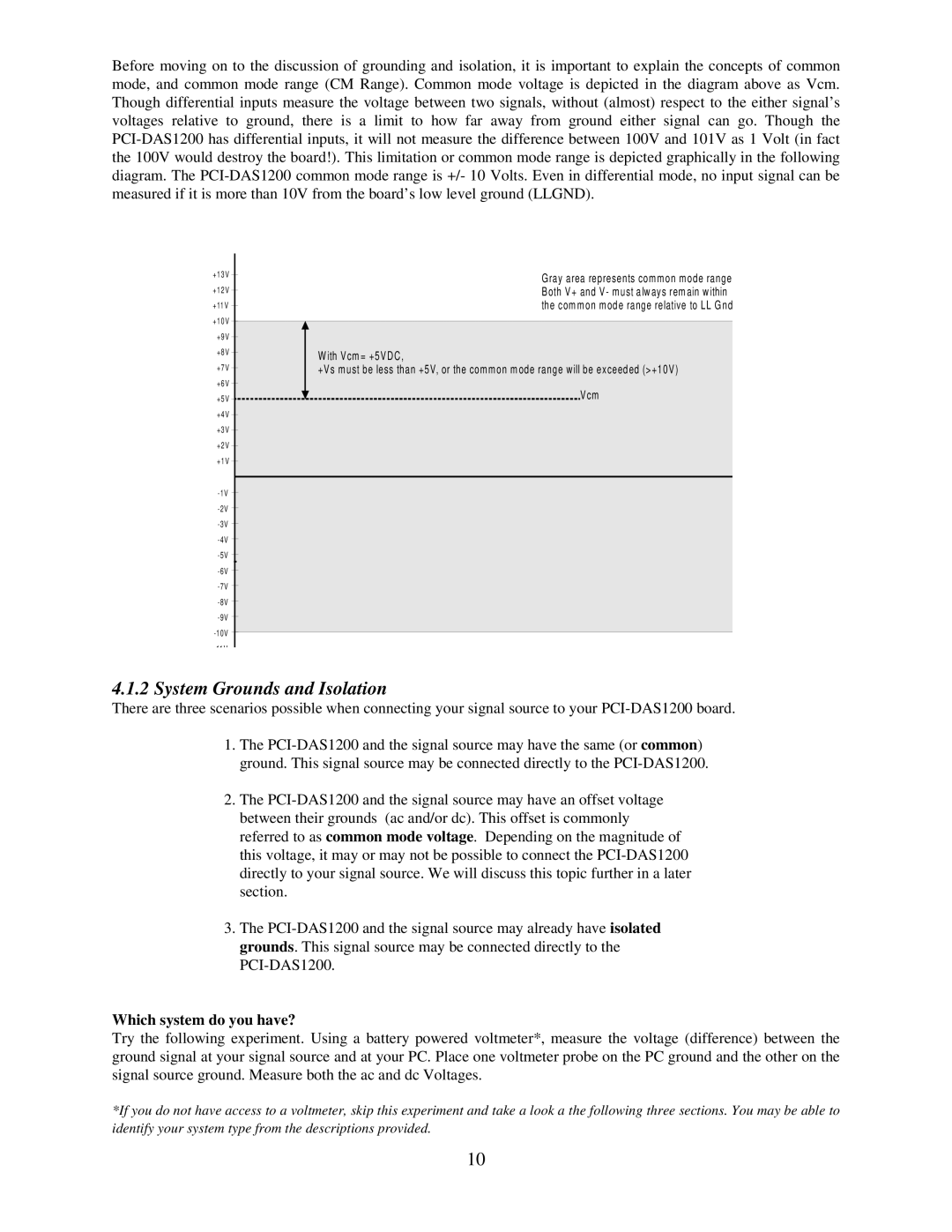
Before moving on to the discussion of grounding and isolation, it is important to explain the concepts of common mode, and common mode range (CM Range). Common mode voltage is depicted in the diagram above as Vcm. Though differential inputs measure the voltage between two signals, without (almost) respect to the either signal’s voltages relative to ground, there is a limit to how far away from ground either signal can go. Though the
+13V |
| Gray area represents common mode range |
| ||
+12V |
| |
| Both V+ and V- must always remain within | |
| ||
+11V |
| the common mode range relative to LL Gnd |
| ||
+10V |
|
|
|
| |
+9V |
|
|
|
| |
+8V |
| With Vcm= +5VDC, |
| ||
+7V |
| |
| +Vs must be less than +5V, or the common mode range will be exceeded (>+10V) | |
| ||
+6V |
| Vcm |
| ||
+5V |
| |
+4V |
|
|
|
| |
+3V |
|
|
|
| |
+2V |
|
|
|
| |
+1V |
|
|
|
|
11V
4.1.2System Grounds and Isolation
There are three scenarios possible when connecting your signal source to your
1.The
2.The
3.The
Which system do you have?
Try the following experiment. Using a battery powered voltmeter*, measure the voltage (difference) between the ground signal at your signal source and at your PC. Place one voltmeter probe on the PC ground and the other on the signal source ground. Measure both the ac and dc Voltages.
*If you do not have access to a voltmeter, skip this experiment and take a look a the following three sections. You may be able to
identify your system type from the descriptions provided.
10
